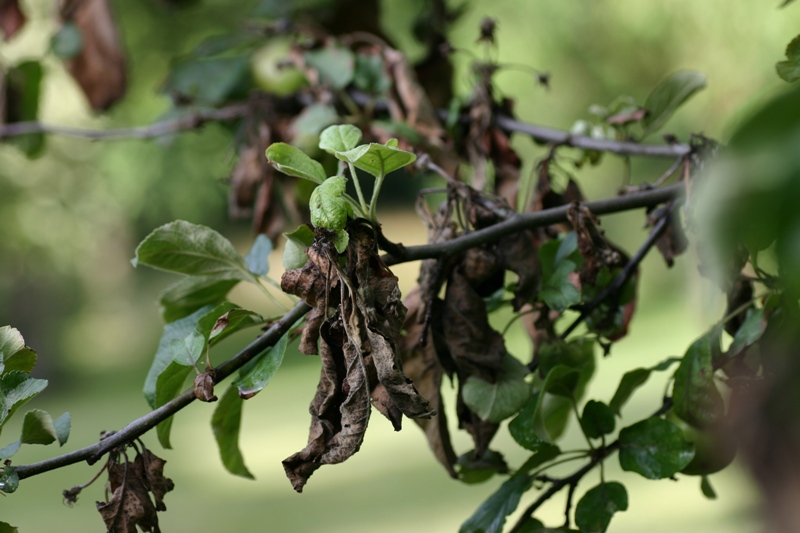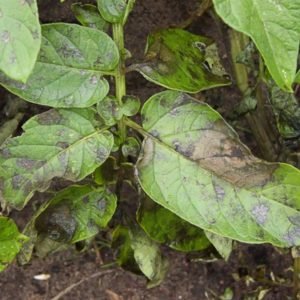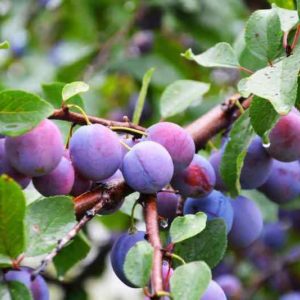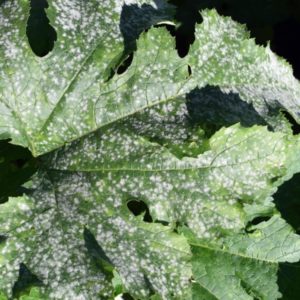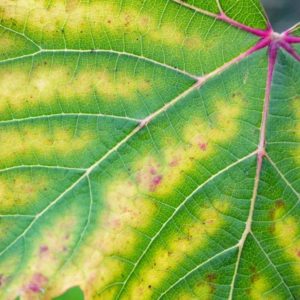Latin name: Erwinia amylovora
Common name: Fire blight
Type: Bacterial disease
Symptoms: Flower wilt, cankers, sticky ooze
Dreaded in orchards where it attacks apple trees, pear trees and other fruit trees of the same family, fire blight can quickly decimate a plantation if it is not taken care of quickly.
What is fire blight?

As the name suggests, fire blight is caused by the bacteria Erwinia amylovora. The disease only affects plants of the Rosaceae family: apple, pear, cotoneaster, rowan ( Sorbus ), hawthorn ( Crataegus ), photinia ( Photinia or Stranvaesia ) and burning bush ( Pyracantha ). Note that it does not seem to attack stone fruits such as plum, cherry, peach and the nectarine trees, which are nevertheless classified in the Rosaceae family.
Arriving in France in the 1970s, the disease quickly spread and is the subject of constant surveillance. Certain plant species, considered too sensitive, are prohibited from planting in France ( decree of August 12, 1994 ).
Recognize the symptoms
To effectively fight fire blight, it is essential to know how to recognize its symptoms:
- Of cankers (bark necrosis) appear on the branches and trunk.
- Bacterial fire symptoms A white, viscous exudate oozes as droplets from the cankers in humid weather.
- The flowers wilt and then die at the time of flowering.
- Young shoots abort when the infection spreads through the inner bark (also called phloem or bast).
- The leaves, branches, floral bouquets appear burnt and take on a characteristic reddish-brown tint, which gives the disease its name.
One of the specificities of fire blight is its speed of progression. A branch can die in just a few days and a tree in a few months.
Spread of disease

Like many fungal and bacterial diseases, warm temperatures and a humid atmosphere are the ideal conditions for the spread of fire blight. This is when the cankers exude the most, facilitating the spread of Erwinia amylovora bacteria via birds, wind, rain, insects, etc.
The disease is active from spring to autumn with a peak in re-vegetation, especially after flowering when the bacteria take advantage of small wounds left by falling petals. Waist-related sores are also a gateway for the disease.
Treat fire blight
There is no curative treatment (chemical or not) for fire blight. The only way to fight is to adopt certain gestures that will limit the contagion.
When the disease is declared, remove the infected parts by cutting them :
- Peel the bark to reveal the brown-red color, the sign of infection.
- From the contamination point, cut at least 30 cm of healthy wood for small branches and at least 60 cm for larger ones.
- Disinfect your tools between each cut!
- Burn all the cut parts.
- Remove cankers. As the bacteria stay there in the winter, they will contaminate your tree again the following spring.
- If a subject is too damaged, tear it off and burn it.
- Remove secondary flowers before they open.
Smart Tip: it is essential to burn all plant waste contaminated by fire blight. The disinfection of any tools (and whatever the operation) is also mandatory. Note that even outside the period of infection, it is strongly recommended to do so.
